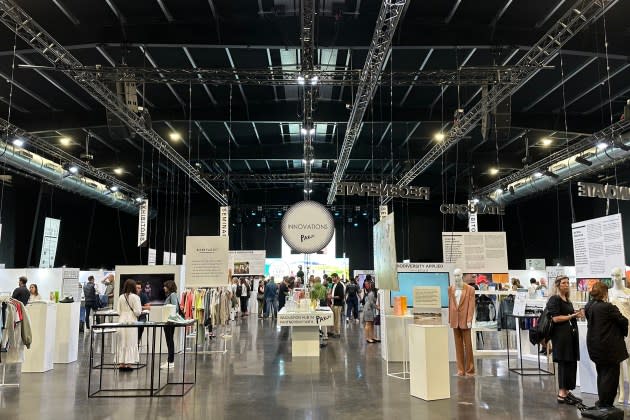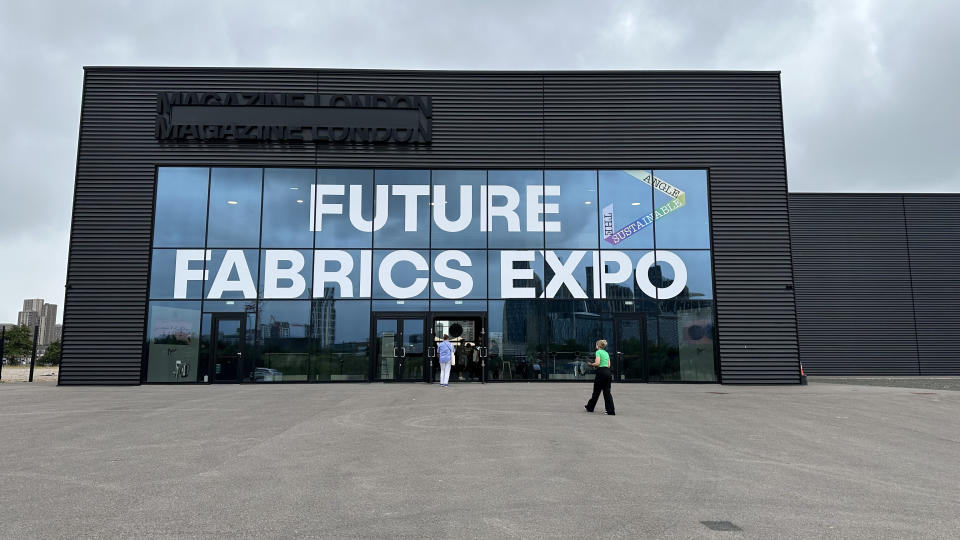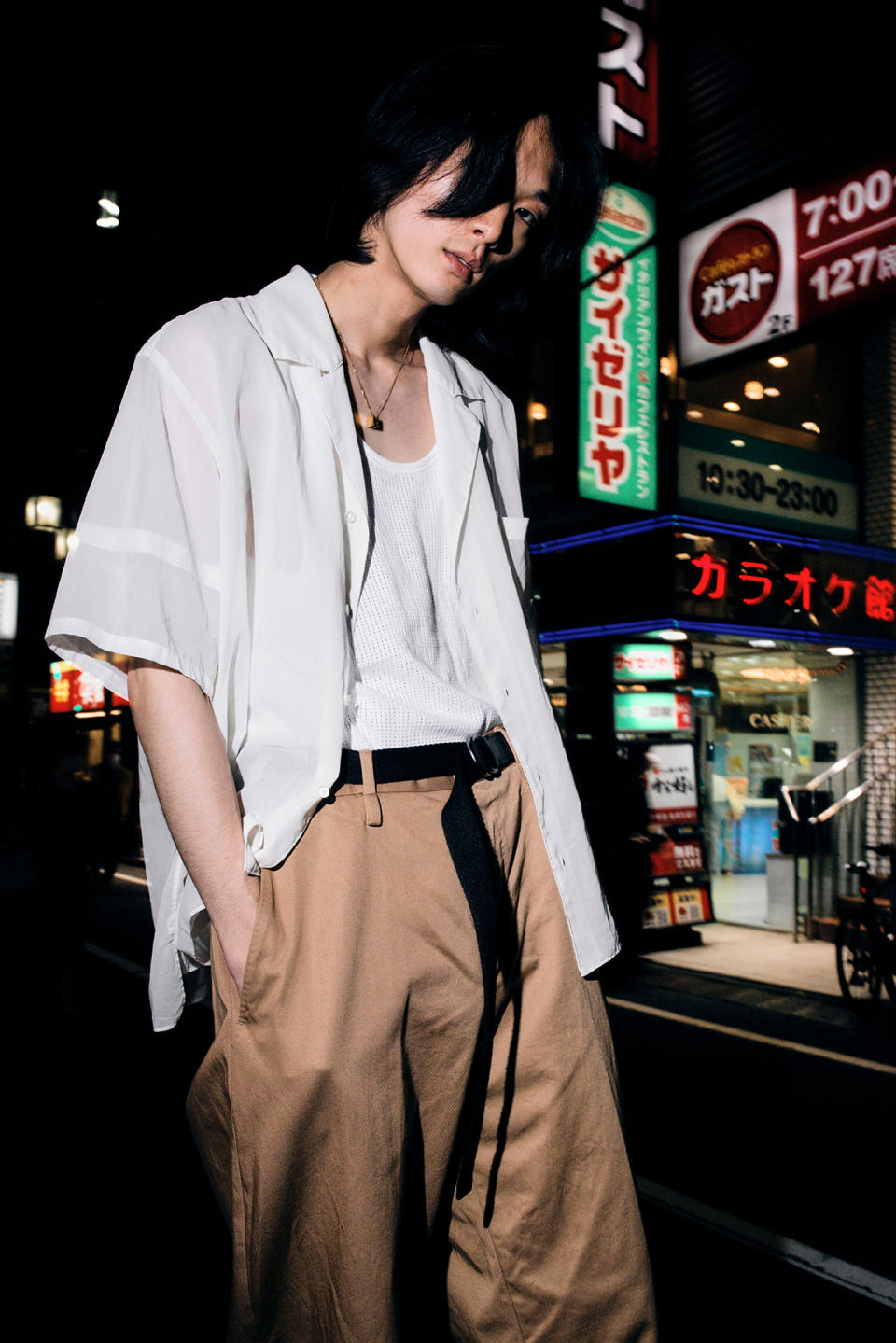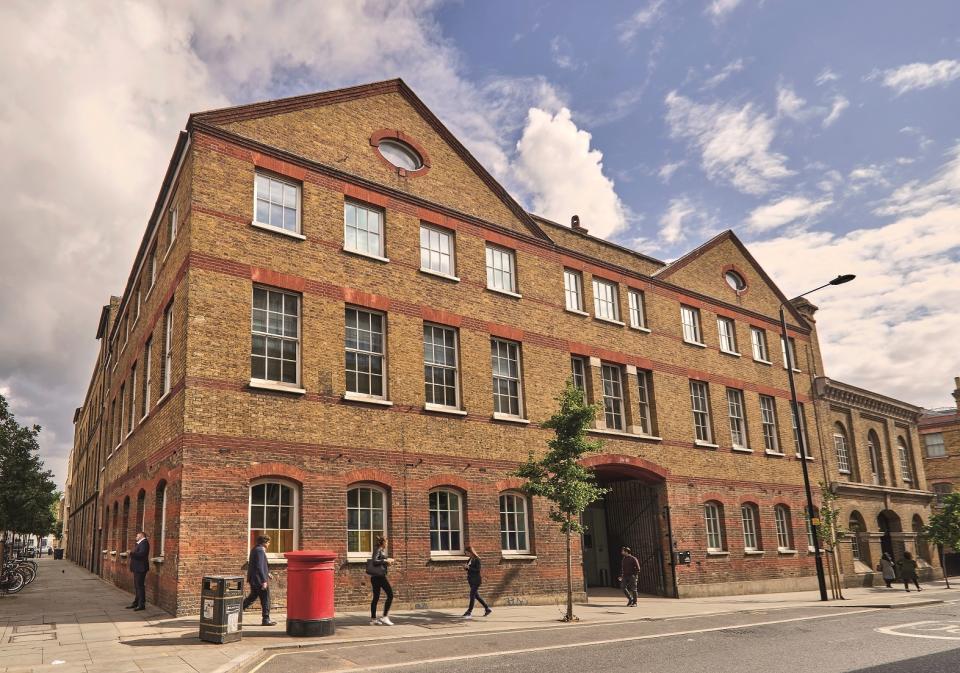Future Fabrics Expo Highlights Green Innovations, and Practical Solutions, for Fashion
- Oops!Something went wrong.Please try again later.

LONDON — Interested in helping fashion become more sustainable?
Then it’s time to dust off the biology and chemistry books, and learn all about the power of polymers and synthetic proteins and the potential of cork and coconuts in fashioning new textiles and materials.
More from WWD
A host of new ingredients, innovations and materials were under discussion, and on display, at the Future Fabrics Expo 2023, which took place in London this week at Magazine in North Greenwich.
The three-day fair was a wonderland of invention and a buzzy showcase of the latest textiles and materials which brands ranging from BMW to Stella McCartney, Tommy Hilfiger and Cos are currently using — or will use — in their collections.
The fair was packed with textile innovators from around the world who are turning kitchen and garden staples and waste — including mushrooms, bamboo, soybean and tropical plants — into leather and textile alternatives.

Exhibitors included Lenzing, The Mills Fabrica, Clean Bamboo, Modern Meadow and Bananatex. Big corporations and nonprofit organizations such as Parley for the Oceans, the Laudes Foundation, Canopy, LVMH Moët Hennessy Louis Vuitton and Alexander McQueen supported different areas and initiatives.
One of the innovators taking part was Luke Haverhals, the founder and chief executive officer of Natural Fiber Welding, or NFW. The company’s textiles, created and produced at scale, are made from abundant natural resources such as cork, clay, coconut char, talc and a variety of different minerals.
Haverhals, who holds a Ph.D. in chemistry from the University of Iowa, has made it his company’s mission to provide a range of brands and industries with alternatives to plastics and petrochemical-based materials.
He’s done so by whipping “abundant, redundant and diverse” plants, soil and other natural matter into textiles and other components. One of his products is a strong, rubbery substance that can be used to make shoe soles. Spanish footwear brand Camper is already a client.
NFW’s solar-powered machines can produce in bulk, which has won the company many customers. BMW uses the company’s flagship leather-like material, Mirum, for car interiors, while Stella McCartney uses a version of Mirum for some of its handbags.

“We’re creating ‘recipes’ for new materials that not only perform, but in some cases perform better and more efficiently than leather. And there are no tanneries involved,” said Haverhals. “Most importantly, we have the scale and the capital efficiency to do so.”
Haverhals added that NFW is “saturated” with demand from luxury car, fashion and footwear brands, and is able to produce roll after roll — and hundreds of millions of square feet — of product annually.
Another company that’s pressing science into action is Spiber, a Japanese lab that operates like a brewery. But instead of making beer, it uses the fermenting process to “design” proteins that go on to become yarns that are soft as silk.
Spiber can replicate the protein chains of just about any natural substance, such as animal feedstock or even human hair. The fermenting process creates a sludgy, liquid protein polymer that is eventually transformed into a silk-like filament, and finally, a biodegradable yarn.
Another company driving innovation in the fashion space is Säntis Textiles, a Switzerland-based, family-owned firm that has invented machines that recycle cotton without damaging or shortening the fibers.
Säntis recycles everything mechanically, uses zero water, chemicals or bleach, and works with industrial and post-consumer waste.
The company’s founder, Stefan Hutter, designed the machines and said they don’t clamp the cotton or rotate it too much, which keeps the fibers strong and long.
The company creates knits such as jersey and wovens including canvas. Its first client was PVH Corp., and in particular the Tommy Hilfiger and Calvin Klein brands. Säntis also supplies its recycled cotton to Ralph Lauren, Patagonia and the designer Mara Hoffman.
Hutter launched the cotton recycling technology, known as RC0100, in 2016 and said that at the time “many people didn’t understand what we were doing. But the industry has been changing quickly since then.”
Lenzing, maker of Tencel, was also out in force. It showed guests at the fair how it transforms wood chips from pulp to fiber to fabric, which it supplies to a broad range of designers and brands including Boyish Jeans, a sustainable label; Madewell, and Cos.
At the Paris menswear shows in June, designer Aldo Maria Camillo of AMC worked Tencel, Lenzing’s flagship textile, into fluid oversized shirts in white or indigo.
Lenzing also showed off its Refibra technology, which involves upcycling cotton scraps from garment production. The scraps are then transformed into cotton pulp.
The Mills Fabrica, an innovation and incubation platform owned by the Hong Kong-based conglomerate Nan Fung Group, swung the spotlight on innovation as well.
It brought three start-ups to the Future Fabrics Expo: Huue, a company creating scalable, bio-based dyes, starting with indigo for denim; Modern Synthesis, which uses bacteria to create durable new materials, and Circ, a company that offers recycling solutions for polycotton.
Nikita Jayasuriya, head of Europe and general manager of The Mills Fabrica, said the fair provided a valuable platform for all of the innovators the company has invested in so far.

The Mills Fabrica has stakes in 28 companies across fashion and agri-tech, and Jayasuriya said that Future Fabrics Expo helped the organization gain insight into how to make its products more sustainable by learning from peers.
Circ, he said, was a good example of how companies can gain so many insights at the fair. The start-up is able to separate cotton and polyester from blended textiles on a large scale, and recently launched a collaboration with Zara. It is planning to open a plant that can process up to 60,000 tons of industrial waste and off-cuts from garment factories a year.
Jayasuriya said that, down the line, Circ wants to source directly from retailers and help them solve their deadstock problem.
“There are a lot of existing materials that we can take from the market and continue to use. There is no need to produce new materials,” Jayasuriya said.
Prior to The Mills Fabrica, Jayasuriya worked as partnership director at Parley for the Oceans and managed to ink a high-profile three-year partnership with Dior Men on beachwear capsules for the recycled polyester provider.
Having been involved with Future Fabrics Expo for the past five years, Jayasuriya said he has seen start-ups with big ideas gaining real momentum as the fashion sector continues to look for ways to go green.
He believes the participation of major luxury players such as Kering and LVMH Moët Hennessy Louis Vuitton at the fair can help these start-ups “to test the concept and the products and the materials,” and then gradually scale.
“Luxury brands have really got a responsibility to lead this. I think they can do it because of some of the [high] price points of these new innovations. There is not price parity at the moment, so it’s always a little bit more expensive [for smaller brands], and some of the luxury brands can justify that extra expense,” Jayasuriya said.
In his opinion, the next frontier of sustainable fashion will be in the dyeing sector, which generates 40 percent to 60 percent of the carbon emissions for the entire fashion industry.
“We need to start addressing dyeing in the fashion industry. It is the second biggest polluter of the waterways, but the public doesn’t know about it. It’s one of the super important things that we need to start figuring out,” he said.
Designer Nicholas Kirkwood, who is building an eco-shoe factory as part of his ongoing efforts to manufacture footwear sustainably, said the fair was well worth attending.
“It’s so great to have a show like this in London and it’s exciting to see the evolution from one year to the next. It’s quite a mixed bag [of exhibitors], some of whom are well-financed and really exceptional, with viable technologies,” he said.
Kirkwood added that he’s closely following the developments at Natural Fiber Welding “who continue to develop a 100 percent fossil-free alternative leather and other components.” He’s also keeping an eye on Ecovative, “who are leading the way in the mycelium world of product innovations.”
Best of WWD

